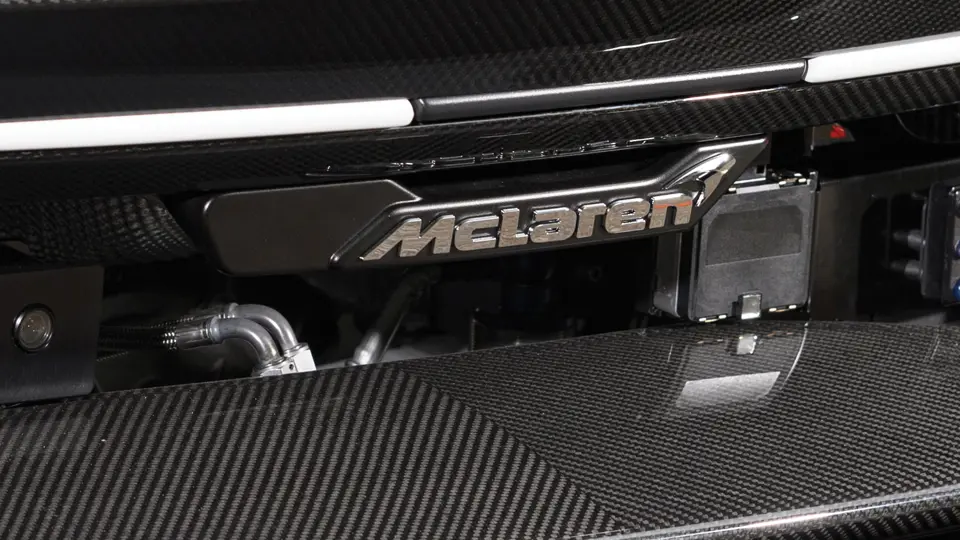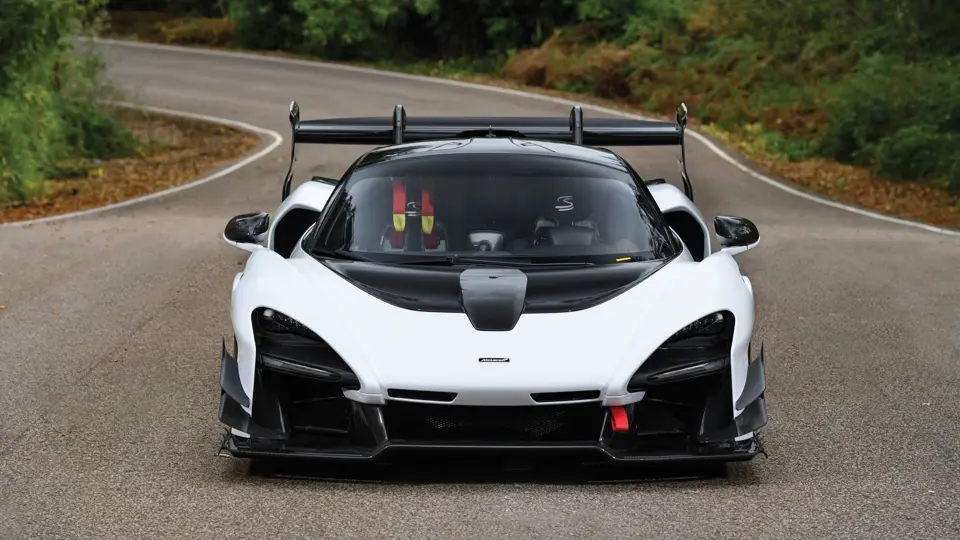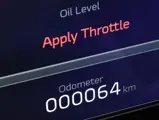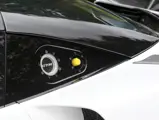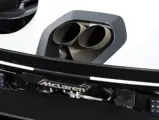When McLaren decides to anoint one of its models with the GTR moniker, it is not without serious consideration and forethought. Only three times in the past thirty years have products from Woking been considered worthy, and the original GTR, the 1995 McLaren F1 GTR, can claim an outright victory at the 24 Hours of Le Mans in its (long) list of accolades. At a time when hypercars are being unveiled with increasing frequency, each one promising unparalleled levels of performance, it is those with proven racing pedigree that deliver on the prelaunch promises and command the most respect. None come with more pedigree than a GTR version of a McLaren dedicated to the memory of Ayrton Senna, its most successful racing driver.
Whereas the McLaren Senna was conceived from the outset to be the most track-focused road car McLaren had ever built, the GTR version is intended to simply be the fastest track car McLaren has ever built, other than a fully-fledged Formula 1 car. Mike Flewitt, CEO of McLaren Automotive, summarised the ethos of the project, stating that by being ‘free from the constraints of road car legislation and motorsport competition rules, we have pushed the limits of what is technically possible to advance circuit driving capability to another level entirely’.
Somewhat conspicuously, the engine remains the same M840TR 4.0-litre turbocharged V-8 as found in the standard Senna, featuring dry sump lubrication, lightweight materials for the rods and pistons, and a pair of ultra-low inertia, twin scroll turbo chargers, equipped with electronic wastegates for instant throttle response. However, as the GTR was never intended to be made road-legal, the secondary catalysts are removed from the Inconel and titanium exhaust system, which helps free up more power, bringing the headline figures to a colossal 814 bhp and 590 foot-pounds of torque. It will therefore out-accelerate a standard Senna, meaning a 0–60 mph time of less than 2.8 seconds and a 0–124 mph time of less than 6.8 seconds.
Whereas the changes to the power train can rightly be considered as tweaks, the changes to the aerodynamics are far more comprehensive. Indeed, the GTR takes the already unparalleled levels of aero performance offered by the Senna to another level. At the front, the reprofiled front splitter has vortex generators on the outside edges to smooth airflow underneath the car, whilst at the rear, the gargantuan rear wing is now mounted on LMP1-style endplates, placed further back and higher in the airstream. Whereas the Senna could generate 800 kg of downforce at 155 mph, the GTR raises the bar to over 1,000 kg and can muster the same figures as the standard Senna at 15% lower speeds.
Remarkably, the refinements come with no cost to the drag coefficient, which remains the same as the road car. The carbon-fibre Monocell III-R tub also remains the same of that as the road-going variant, however front track is increased, and new ultra-lightweight forged alloy wheels wrapped in bespoke slick Pirelli P-Zero tyres take the place of the heavier road-going variants, themselves shod in rubber naturally compromised for street use. Since the car had no requirement to navigate speed humps or road imperfections, the suspension was fixed and also optimised for the track. The result of these changes is a marked improvement in mechanical grip to improve performance in slower-speed corners, where aerodynamic performance is less important.
Active aero elements also remain a feature at the front and rear, with nose winglets to guide air either underneath the body for downforce, or through the radiators and oil coolers when required. In addition, the aforementioned enormous rear wing is controlled by hydraulics and moves constantly to suit the driving scenario, either to act as an airbrake, increase downforce, or trim drag as part of an active ‘Drag Reduction System’ (DRS). With the wing acting purely as an airbrake, the car is capable of 3 g of decelerative force, a full 20% more than the Senna road car.
The race-optimised changes continue inside the cockpit as well, where a VBOX HD data logger, car-to-pit radio system, and FIA-approved six-point racing harnesses replace road car necessities such as the airbags and handbrake. Plexiglass replaces glasses, and even the signature transparent ‘sideblades’ from the road-going Senna are swapped for purely carbon-fibre panels, all in the name of saving weight. The result is that despite carrying extra racing essentials like its pneumatic jacking system, it actually weighs 11 kg less and tips the scales at 1,188 kg without fluids.
This particular example is offered for sale as a brand-new car with zero miles on the odometer. It is the ultimate version of McLaren’s current hypercar and may well be the most powerful and track-focused non-hybrid car that the factory ever builds. Being just one of 75 examples makes this a truly unique opportunity to acquire an incredibly special machine.






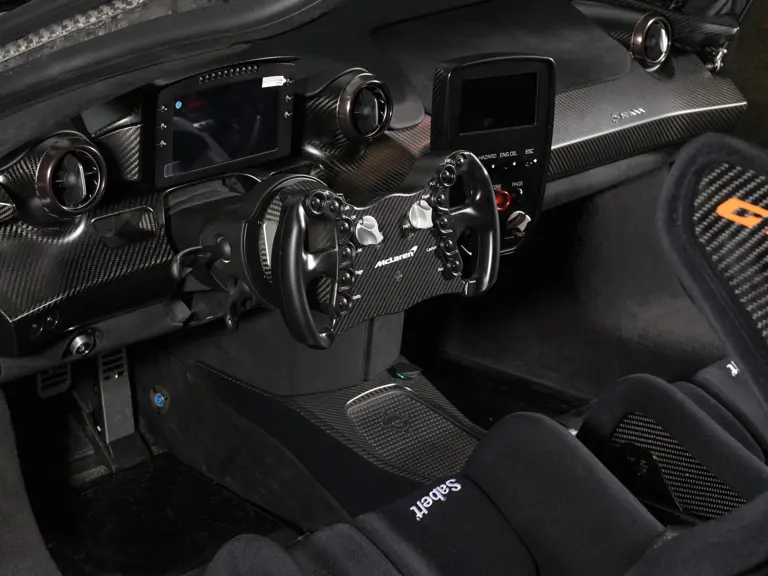

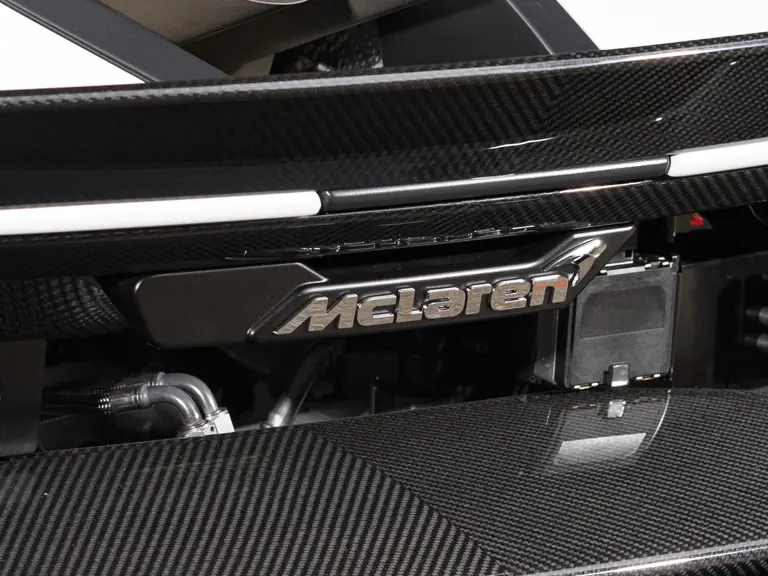


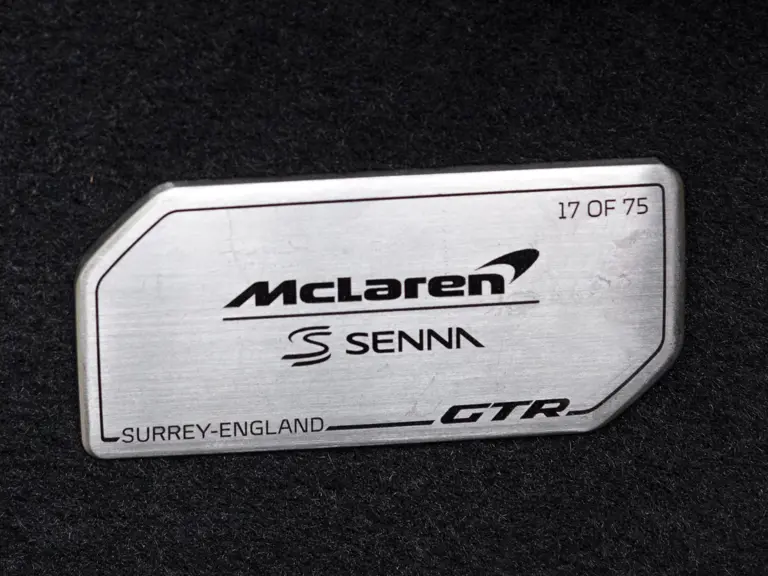


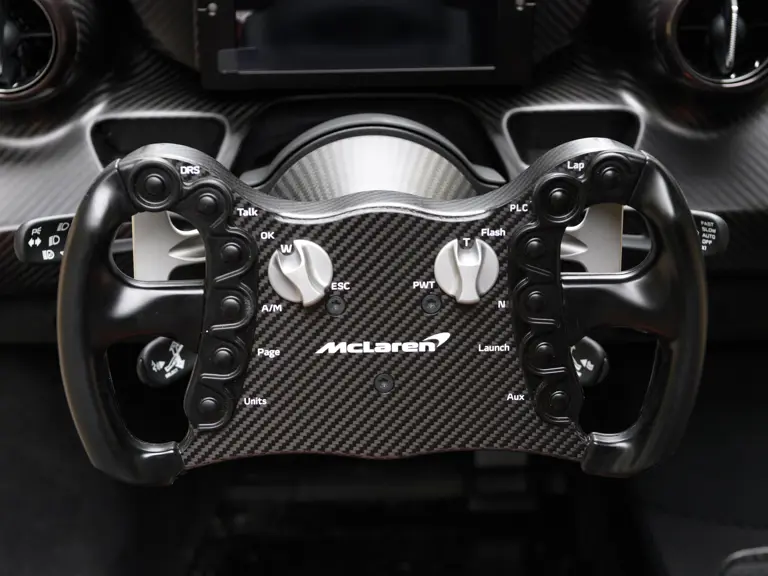
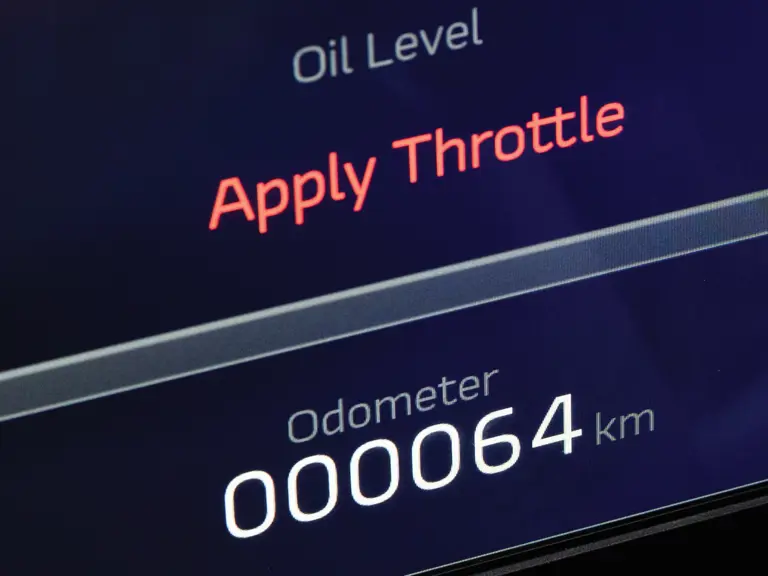
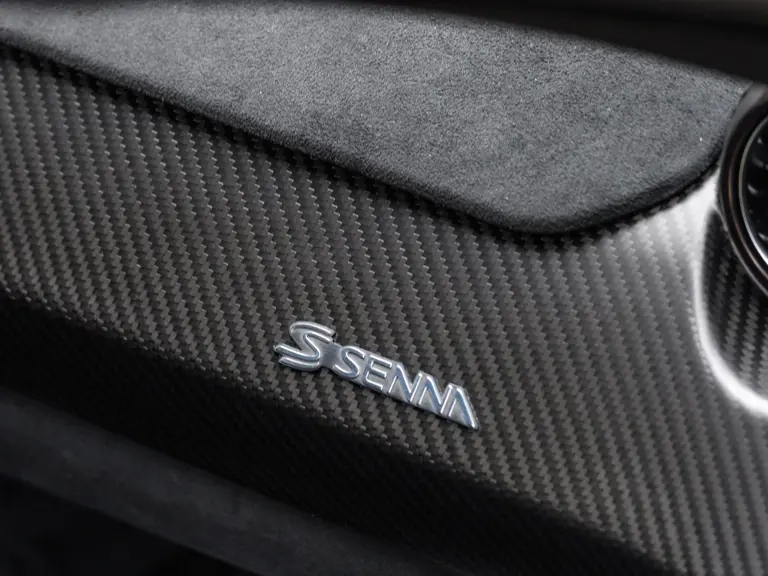



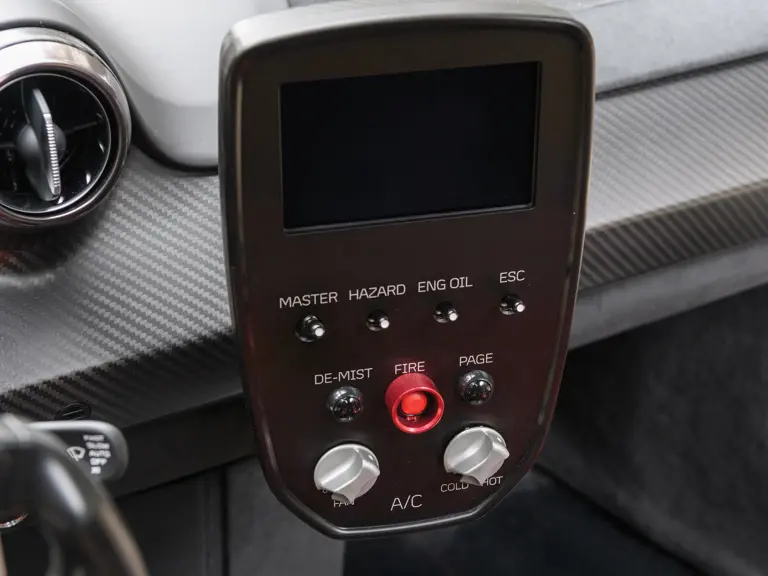
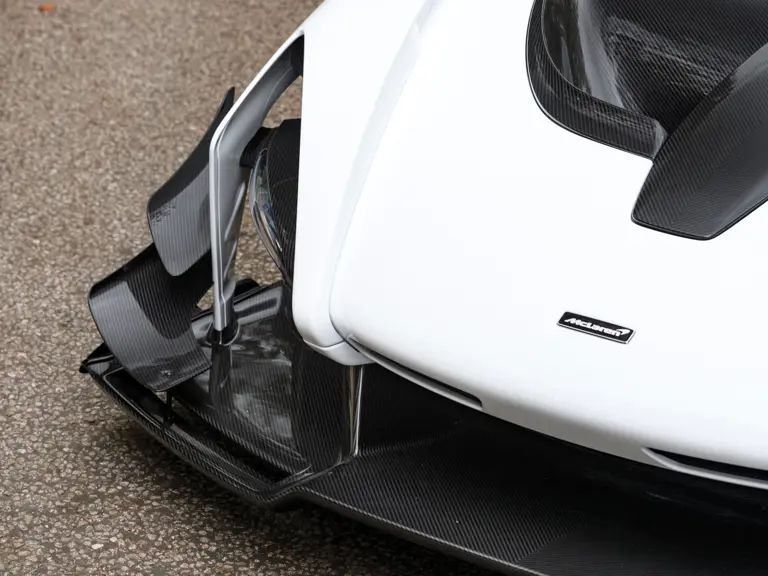
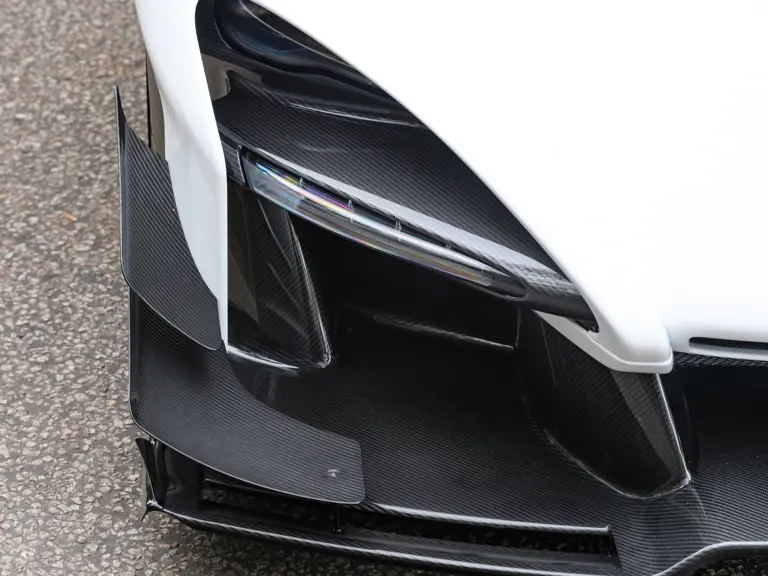

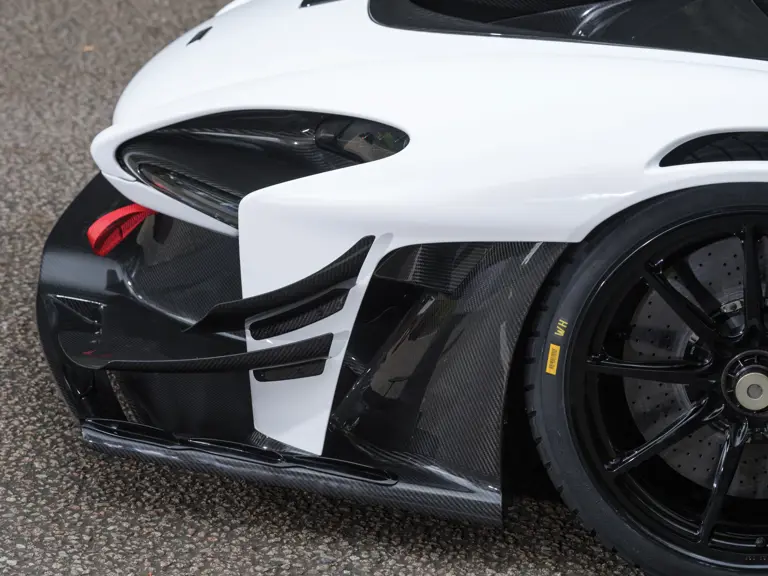
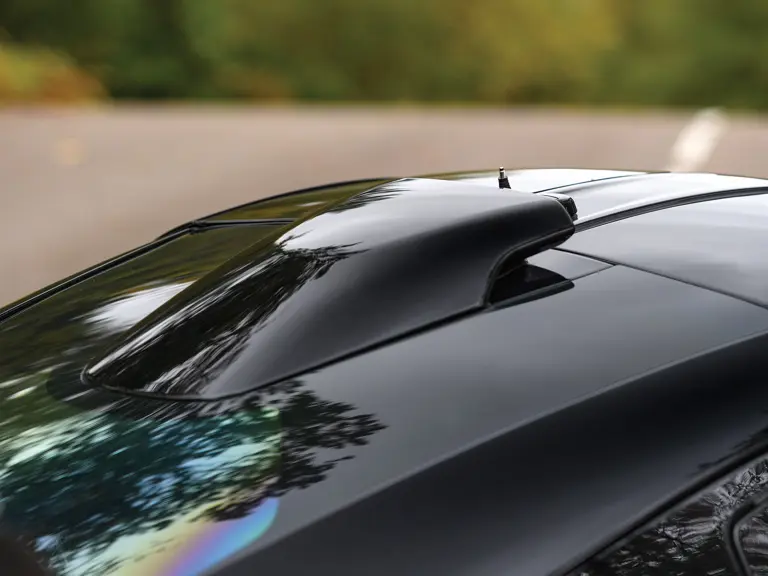
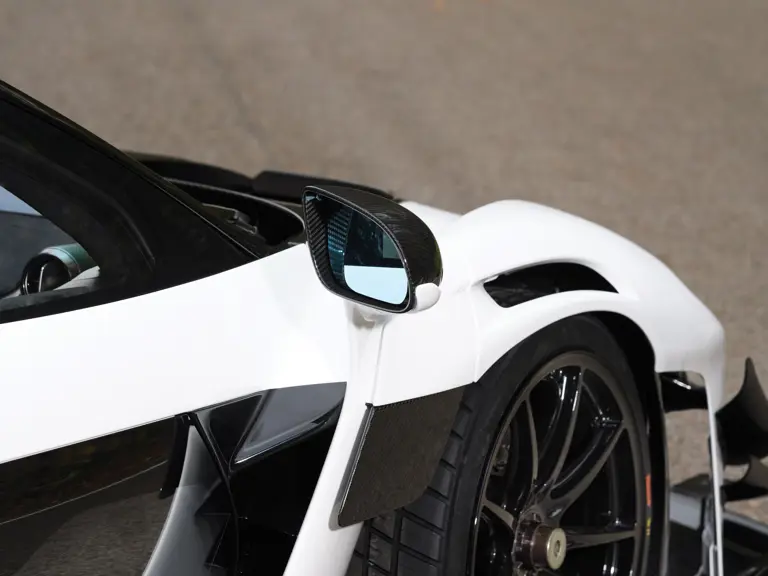
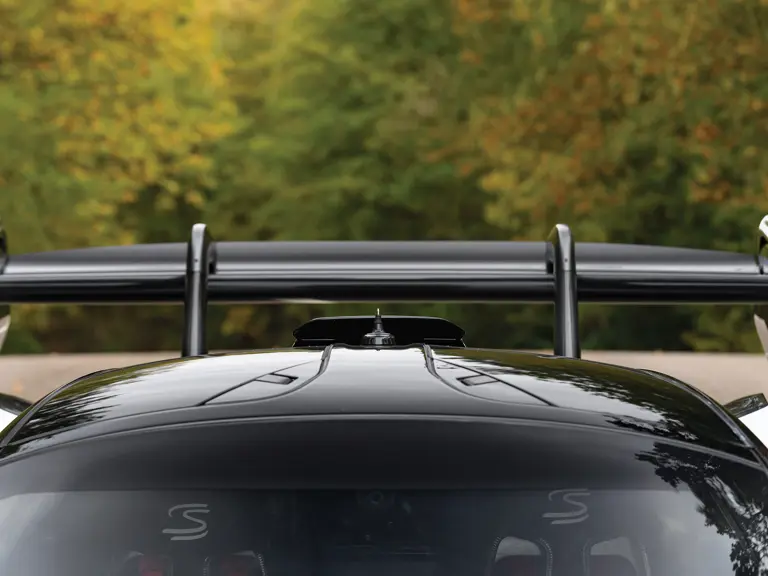
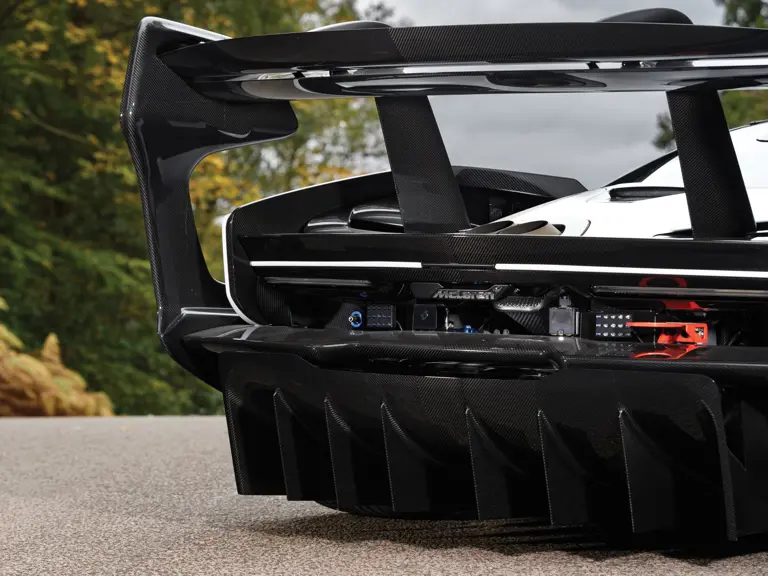
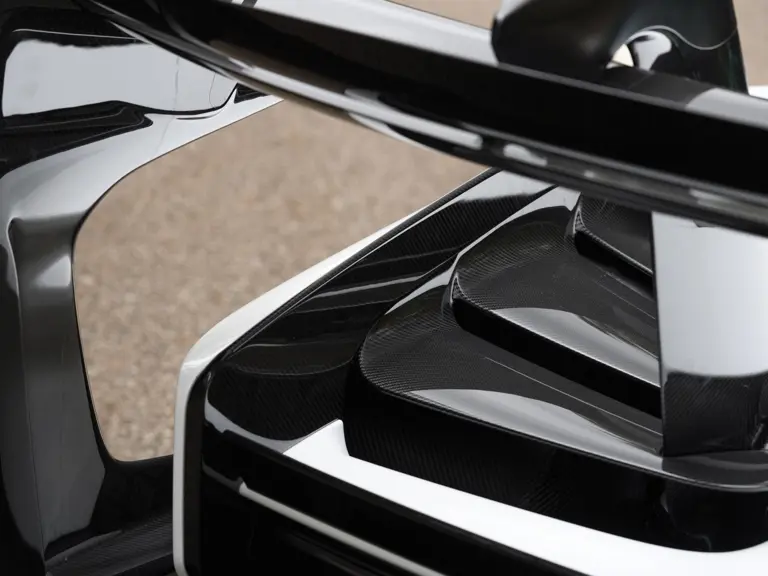
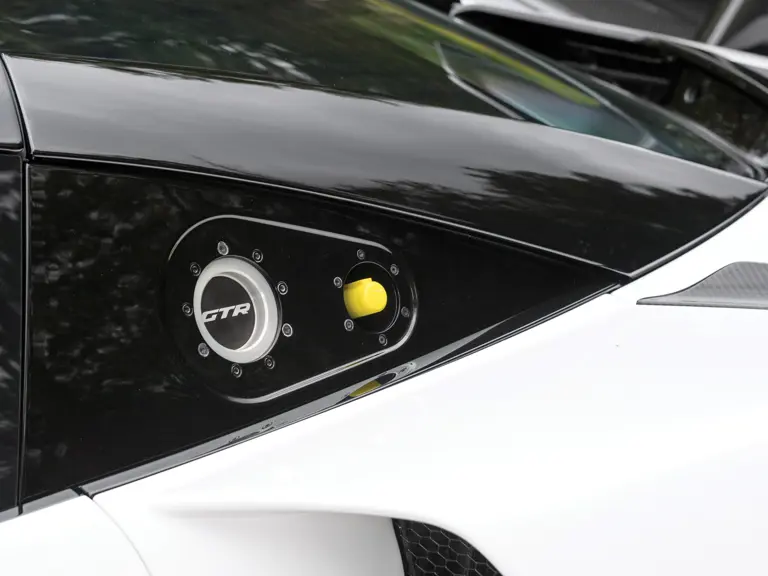
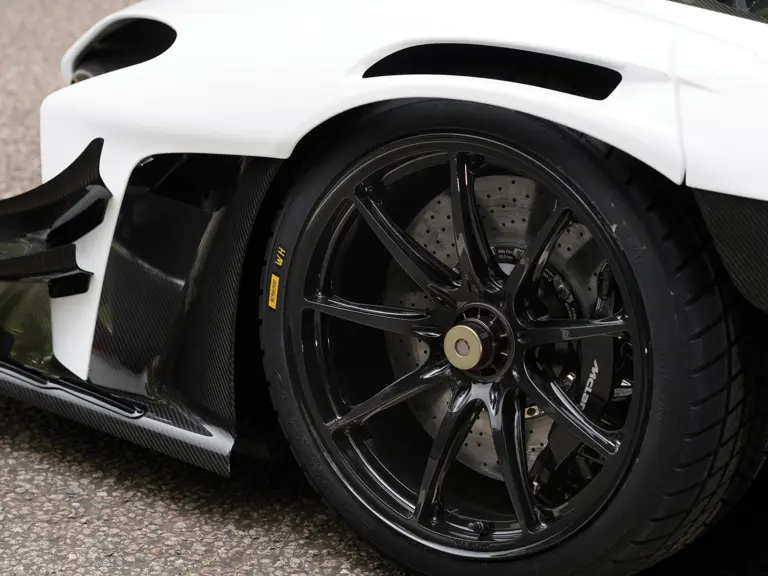

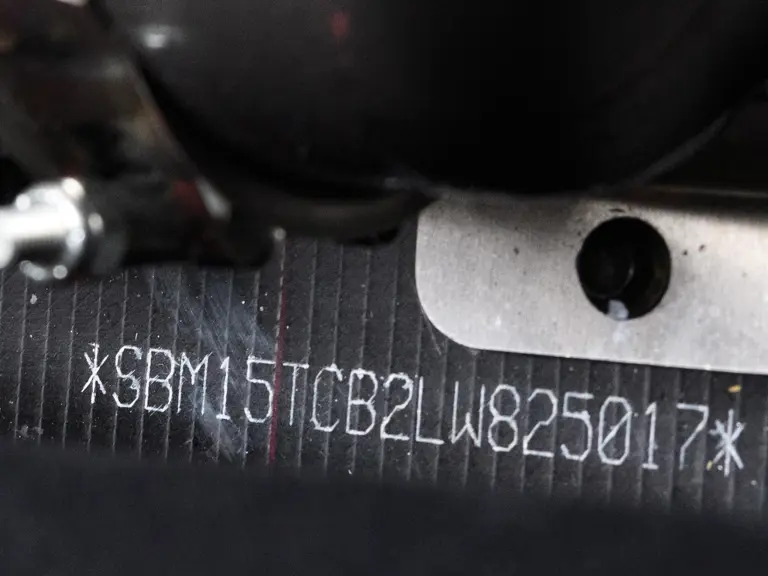






 | Abu Dhabi, United Arab Emirates
| Abu Dhabi, United Arab Emirates
